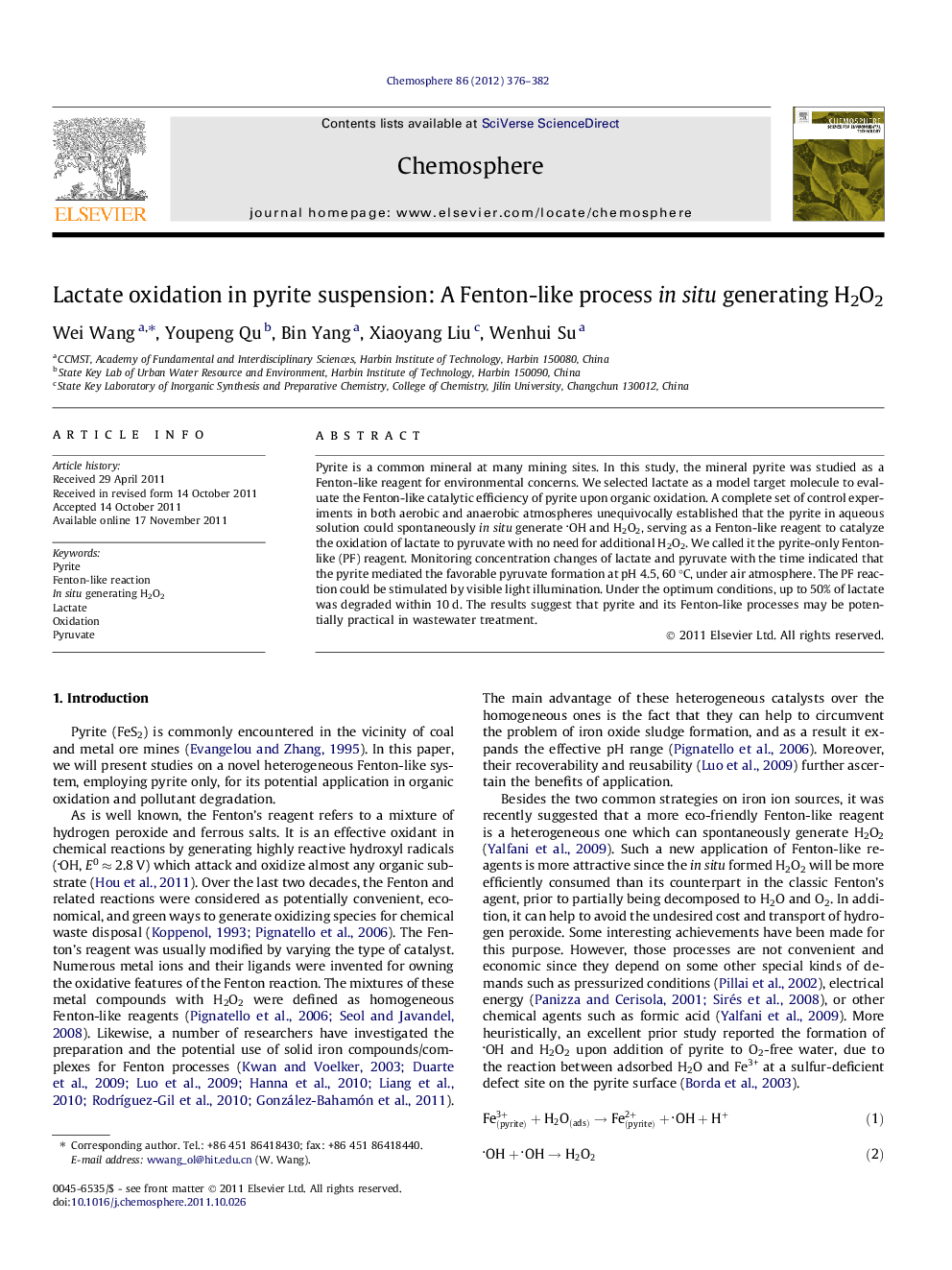| کد مقاله | کد نشریه | سال انتشار | مقاله انگلیسی | نسخه تمام متن |
|---|---|---|---|---|
| 4410287 | 1307537 | 2012 | 7 صفحه PDF | دانلود رایگان |

Pyrite is a common mineral at many mining sites. In this study, the mineral pyrite was studied as a Fenton-like reagent for environmental concerns. We selected lactate as a model target molecule to evaluate the Fenton-like catalytic efficiency of pyrite upon organic oxidation. A complete set of control experiments in both aerobic and anaerobic atmospheres unequivocally established that the pyrite in aqueous solution could spontaneously in situ generate OH and H2O2, serving as a Fenton-like reagent to catalyze the oxidation of lactate to pyruvate with no need for additional H2O2. We called it the pyrite-only Fenton-like (PF) reagent. Monitoring concentration changes of lactate and pyruvate with the time indicated that the pyrite mediated the favorable pyruvate formation at pH 4.5, 60 °C, under air atmosphere. The PF reaction could be stimulated by visible light illumination. Under the optimum conditions, up to 50% of lactate was degraded within 10 d. The results suggest that pyrite and its Fenton-like processes may be potentially practical in wastewater treatment.
Figure optionsDownload as PowerPoint slideHighlights
► Pyrite surface in aqueous was demonstrated to be able to spontaneously generate H2O2.
► Pyrite suspension oxidized lactate to produce pyruvate through a Fenton-like process, with no need for additional H2O2.
► Visible light illumination promoted the oxidation reaction.
► The mineral pyrite was suggested to be a potential catalyst for organic matter oxidation and pollutant degradation.
Journal: Chemosphere - Volume 86, Issue 4, January 2012, Pages 376–382